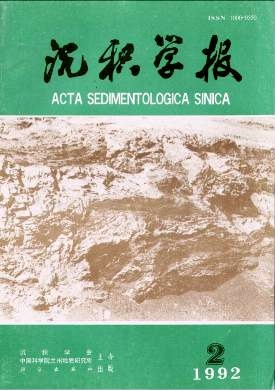Btotic Escape Structure in Yellow River Delta Deposits
- Received Date: 1990-04-27
- Publish Date: 1992-06-10
Abstract: Some Mollusks such as Cyclina sinensis (Gmelin) could live in the distributary channel deposits very close to Yellow River mouth, although the sedimentary rate is high there. The escape traces can over 40cm long, accompaning with the thichening deposition. Following results were presented in the paper. 1. Distribution of mollusks in the Huanghe Horbour's intertidal zone: Above the mean high tidal line was Glaucomya chinsis ( Gray) zone. Under the mean high tidal line was Aloidis laevis- Cyclina sinensis-Sinonovacula zone. Glaucomya chinensis (Gray) was considered to be of greater significant for analying Huanghe River delta's fades. 2.Bioturbation models of Mollusks: There are three main types: tidal flat, distributary mouth and single river mouth.The tidal flat type may be a characteristic bed for us to divide defferent Yellow River delta lobes. 3. Sedimentary rate is the main factor that affect the Mollusks' living. The stage of deposition, such as season, could be shown through study bio-escape sedimentary structure. The plants, Phragmites communis Trin.and Polygonum hydropiper L., can live in lateral bar deposits of the active Yellow River distributary channel. During the flood season in 1988, the stems of these plants were partly buried by silt, but sprouted new roots and revived when sedimentary rate decreased. The longths of these plants escape traces can as long as 90-120cm.
| Citation: | Li Guangxue, Xue Chunting. Btotic Escape Structure in Yellow River Delta Deposits[J]. Acta Sedimentologica Sinica, 1992, 10(2): 88-93. |






 DownLoad:
DownLoad: